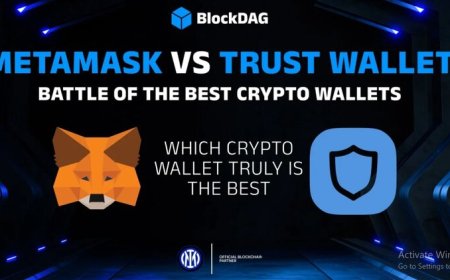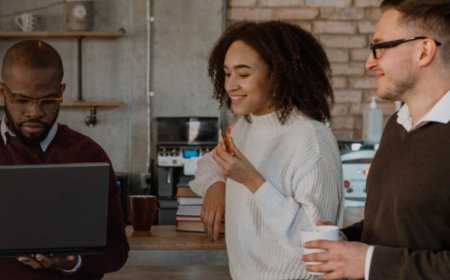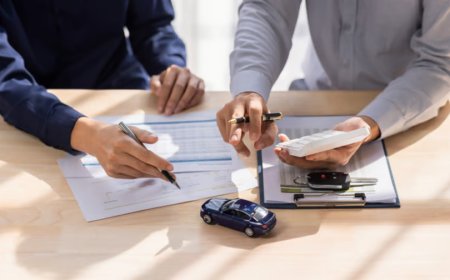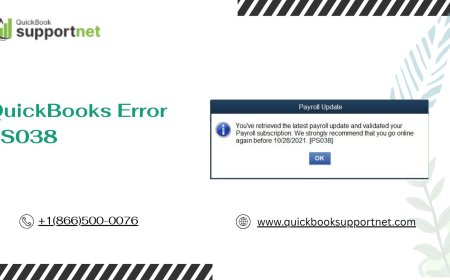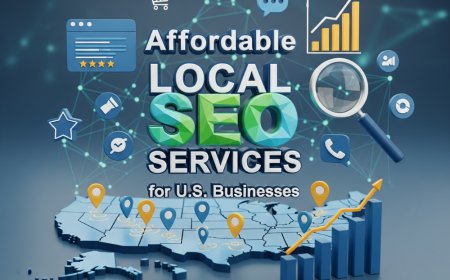How To Gallery Hop Route Riverside
How to Gallery Hop Route Riverside Gallery hopping is more than a casual stroll through art spaces—it’s an immersive cultural experience that connects communities, supports local artists, and transforms urban environments into open-air museums. In Riverside, California, this tradition has evolved into a vibrant, monthly ritual that draws art lovers, collectors, students, and tourists alike. The “G
How to Gallery Hop Route Riverside
Gallery hopping is more than a casual stroll through art spaces—it’s an immersive cultural experience that connects communities, supports local artists, and transforms urban environments into open-air museums. In Riverside, California, this tradition has evolved into a vibrant, monthly ritual that draws art lovers, collectors, students, and tourists alike. The “Gallery Hop Route Riverside” is a curated path through the city’s most dynamic art venues, each offering unique exhibitions, live performances, and interactive installations. Whether you’re a longtime resident or a first-time visitor, understanding how to navigate this route enhances your appreciation of Riverside’s creative pulse.
This tutorial provides a comprehensive, step-by-step guide to planning, executing, and maximizing your gallery hop experience in Riverside. From timing your visit to engaging with artists, we cover everything you need to know to turn a simple evening out into a meaningful cultural journey. With over a dozen galleries participating each month and new venues emerging regularly, mastering this route ensures you never miss a moment of innovation, history, or expression.
Step-by-Step Guide
1. Research the Monthly Schedule
Gallery Hop in Riverside is not a daily event—it occurs on the first Friday of every month, typically from 6:00 PM to 9:00 PM. This monthly rhythm allows galleries to coordinate new openings, artist talks, and special programming. Before planning your visit, visit the official Riverside Arts Council website or follow @RiversideArtsCouncil on social media for the official map and list of participating venues. Each month features a different theme, such as “Emerging Voices,” “Environmental Art,” or “Indigenous Perspectives,” which influences the selection of works on display.
Not all galleries participate every month. Some rotate on a quarterly basis, while others host solo exhibitions only during peak seasons. Confirm the current lineup before leaving home. Many galleries post preview images and artist bios online, giving you the chance to prioritize the ones that align with your interests.
2. Plan Your Route Using the Official Map
The Gallery Hop Route Riverside is designed as a walkable loop centered in downtown Riverside, with most venues clustered within a 1.5-mile radius. The official map, updated monthly, shows the exact locations, opening hours, and special events at each stop. Start by identifying your first gallery—ideally one near a parking area or public transit stop. Popular starting points include the Riverside Art Museum, the UCR/California Museum of Photography, or the historic Mission Inn district.
Use a digital map app like Google Maps or Apple Maps to plot your route. Set walking directions between each gallery to avoid backtracking. Most participants walk the entire route, but if mobility is a concern, consider using the Riverside Transit Agency’s free “First Friday Shuttle,” which loops between key venues from 5:30 PM to 10:00 PM.
3. Dress Appropriately and Pack Essentials
Downtown Riverside evenings can vary in temperature, even in summer. Layer your clothing: a light jacket or shawl is ideal for indoor galleries with air conditioning. Wear comfortable, closed-toe shoes—many galleries are in converted historic buildings with uneven flooring or stairs.
Bring a small crossbody bag or clutch with essentials: a phone charger, hand sanitizer, water bottle, and a notebook or sketchpad. While photography is often permitted (unless otherwise posted), avoid using flash. Some galleries encourage visitors to jot down impressions or questions to revisit later.
4. Arrive Early to Avoid Crowds
While the event is lively, arriving between 6:00 PM and 6:30 PM gives you the best chance to engage with artists and curators without the rush. By 7:30 PM, many venues reach peak attendance. Early arrivals often get first access to limited-edition prints, artist meet-and-greets, and complimentary refreshments.
Don’t rush. Spend at least 15–20 minutes at each gallery. Read the wall text, observe the composition of each piece, and note any recurring themes. Many artists are present during Gallery Hop and welcome conversation—this is your opportunity to understand the intent behind the work.
5. Engage with Artists and Curators
One of the most valuable aspects of Gallery Hop is direct access to the creators. Artists often stand near their work, ready to explain their process, inspiration, or materials. Ask open-ended questions: “What led you to this technique?” or “How does this piece connect to the month’s theme?”
Curators may give brief talks at 7:00 PM or 8:00 PM—arrive five minutes early to secure a good spot. These talks often reveal hidden details you’d miss on your own. Don’t be shy to ask for a business card or follow-up contact; many artists welcome email inquiries for commissions or future shows.
6. Take Notes and Document Your Experience
Keep a journal or digital note on your phone. Record the title of each artwork, the artist’s name, medium, and a short reflection. For example: “‘Echoes of the River’ by Maria Lopez—mixed media on reclaimed wood. The textures mimic sediment layers. Artist spoke about ancestral memory and water rights.”
Photograph details, not full pieces, unless permission is granted. Some artists request no photos at all, especially for unpublished work. Always ask before snapping a picture. These notes become a personal archive of your artistic journey and can later inform future visits or research.
7. Explore Beyond the Main Route
While the official route covers 10–12 galleries, Riverside’s art scene extends beyond downtown. After completing the core loop, consider visiting nearby spaces like the Box Gallery in the 5th Street Arts District or the Riverside County Museum of Art in nearby La Sierra. These venues often have extended hours or weekend openings that complement the Friday event.
Some galleries host after-parties or pop-up performances in adjacent cafes or courtyards. Check the event flyer or ask staff if there’s a closing reception at a nearby location—many include live jazz, spoken word, or dance performances that tie into the exhibition’s theme.
8. Support Local Artists Responsibly
Gallery Hop is not just about viewing—it’s about sustaining. Many works are for sale, and purchasing directly from the artist ensures fair compensation. Prices range from $50 for small prints to several thousand for original pieces. If you’re not ready to buy, consider leaving a tip in the donation jar, sharing the artist’s social media, or writing a review on Google or Artsy.
Some galleries offer payment plans or “pay-what-you-can” options for emerging artists. Don’t assume something is too expensive—ask if there are smaller works or editions available. Supporting art doesn’t always require a large investment.
9. Return and Revisit
Gallery Hop is not a one-time event. Many artists rotate their work monthly, and new exhibitions open every four to six weeks. Return the following month to see how themes evolve. Build relationships with gallery staff—they’ll remember you and may invite you to private viewings or artist dinners.
Over time, you’ll notice patterns: recurring materials, shared political messages, or stylistic influences among local artists. This deepens your understanding of Riverside’s artistic identity and turns you from a visitor into a community participant.
Best Practices
Respect the Space and the Art
Gallery spaces are curated environments designed to focus attention on the artwork. Maintain a quiet tone, avoid touching surfaces, and keep bags and coats away from displays. Even the most casual visitors should treat each piece with reverence. A single fingerprint on a delicate paper print can cause irreversible damage.
Follow the “Look, Think, Feel” Framework
When encountering a new piece, use this three-step approach:
- Look: Observe color, texture, scale, and composition.
- Think: What is the artist trying to communicate? What historical, cultural, or personal context might inform this work?
- Feel: What emotional response does it evoke? Why?
This method transforms passive viewing into active engagement and deepens your connection to the art.
Don’t Skip the Small Galleries
Large institutions like the Riverside Art Museum attract attention, but some of the most compelling work appears in tiny, unassuming spaces. Look for galleries tucked into storefronts, repurposed warehouses, or even libraries. These venues often showcase experimental, non-commercial art that challenges norms and pushes boundaries.
Be Mindful of Cultural Sensitivity
Riverside’s art scene reflects its diverse population—Latinx, Indigenous, Southeast Asian, and African diasporic communities are well-represented. Some artworks may address difficult topics like immigration, land rights, or systemic inequality. Approach these with humility. If you don’t understand a reference, ask respectfully rather than assume.
Use Social Media Wisely
Tag galleries and artists when you post photos. Use hashtags like
RiversideGalleryHop, #RiversideArt, or #FirstFridayRiverside to join the community conversation. Avoid posting images of people without consent, especially artists or attendees who may not want their likeness shared.
Volunteer or Intern
Many galleries rely on volunteers for setup, greeting, and event coordination. Offering a few hours of your time opens doors to behind-the-scenes access, networking opportunities, and deeper insight into how the art world functions. Check the Riverside Arts Council’s volunteer page for openings.
Bring a Friend—But Don’t Rush
Gallery hopping is more enjoyable with company, but avoid the urge to move quickly from one space to the next. Agree beforehand to spend at least 20 minutes per gallery. Let conversations unfold naturally. The goal is not to “check off” venues, but to absorb meaning.
Stay Hydrated and Take Breaks
Walking for two to three hours while standing, talking, and observing can be tiring. Many galleries offer complimentary water or tea. Use restrooms when available, and if you need a quiet moment, sit on a bench in the Mission Inn plaza or the nearby park. Pause. Breathe. Let the art settle.
Tools and Resources
Official Resources
- Riverside Arts Council Website – riversideartscouncil.org – The primary source for monthly maps, artist lists, and event updates.
- Riverside Art Museum – riversideartmuseum.org – Hosts rotating exhibitions and often leads the Gallery Hop with a keynote installation.
- UCR/California Museum of Photography – cmp.ucr.edu – Features photography-based exhibitions and artist residencies.
Mobile Apps
- Google Maps – Use the “Saved Places” feature to create a custom map of your favorite galleries. Enable offline mode to navigate without data.
- Artland – A global art discovery app that includes listings for Riverside galleries and allows you to save favorite artists.
- Eventbrite – Search “Riverside Gallery Hop” for ticketed events, artist talks, or workshops tied to the monthly hop.
Print and Digital Guides
Each month, the Riverside Arts Council releases a free, full-color pamphlet available at participating galleries, libraries, and tourist centers. It includes a map, artist bios, and a QR code linking to audio descriptions of select works. Download a digital copy from their website if you prefer an e-version.
Books and Publications
- “Riverside: A Cultural Atlas” by Dr. Elena Ramirez – Explores the history of art spaces in the city from 1920 to present.
- “California Contemporary: Emerging Artists of the Inland Empire” – Features interviews with 30 Riverside-based artists.
- “The Art of Place: Urban Identity in Southern California” – Includes a chapter on Gallery Hop as a model for community-driven art engagement.
Local Partnerships
Many local businesses collaborate with galleries during Gallery Hop:
- Chico’s Coffee & Art – Offers discounted lattes to gallery hoppers with a wristband.
- Artisan Bread Company – Provides free samples of sourdough at 7:30 PM near the UCR museum.
- Riverside Bike Share – Offers 30-minute free rides for first-time users on Gallery Hop nights.
Online Communities
- Facebook Group: “Riverside Art Lovers” – Over 8,000 members share photos, tips, and upcoming openings.
- Reddit: r/RiversideCA – Look for the monthly “Gallery Hop Thread” for real-time updates and recommendations.
- Instagram:
RiversideGalleryHop
– Follow artists and galleries for behind-the-scenes content and sneak peeks.
Real Examples
Example 1: “Waterlines” – October 2023 Gallery Hop
In October 2023, the theme was “Waterlines,” focusing on the Colorado River’s impact on Southern California communities. The Riverside Art Museum opened a large-scale installation by artist Javier Mendez, using reclaimed plastic bottles to form a cascading river that flowed from ceiling to floor. Nearby, the Box Gallery featured a series of black-and-white photographs by Indigenous photographer Lena White, documenting water protests at the Salton Sea.
A visitor, Maria Chen, a local high school teacher, documented her experience: “I had never seen plastic bottles used as art before. The sound of dripping water made me think of my grandmother’s well in Sonora. I asked Javier how he collected the bottles—he said he gathered them from local beaches over six months. I bought a small print for my classroom. Now my students write poems inspired by it.”
Example 2: “Echoes of the Mission” – February 2024
February’s theme honored the 250th anniversary of Mission San José de Guadalupe. The UCR Museum of Photography displayed archival images from the 1930s WPA project, juxtaposed with contemporary portraits of Latino families living in the same neighborhoods. At the historic Mission Inn Hotel, a live performance by a traditional Indigenous flute ensemble played in the courtyard as visitors walked through the exhibit.
One attendee, Jamal Rivera, a college student studying urban history, noted: “I thought I knew the history of the Mission. But seeing how families still live in the shadow of it—how their lives are intertwined with the architecture—changed my perspective. I interviewed one of the performers afterward. He’s now letting me transcribe his oral history for my thesis.”
Example 3: “Digital Ancestors” – June 2024
June’s theme explored technology and memory. The nonprofit space “The Vault” showcased AI-generated portraits based on family photos submitted by Riverside residents. Visitors could input a name and receive a digital “ancestor” portrait created by algorithm. The gallery also hosted a panel on digital ethics in art.
A visitor, 72-year-old Eleanor Ruiz, submitted a photo of her late husband. “I didn’t know what to expect,” she said. “But when I saw his face—smiling, in color, as if he was still here—I cried. It wasn’t perfect, but it felt true. I’ve never been to a gallery like this.”
Example 4: The Rise of Pop-Up Galleries
In 2023, a group of art students converted a vacant laundromat into “Wash & See,” a pop-up gallery that operated only during Gallery Hop nights. Each month, they invited a different artist to transform the space using laundry detergents, fabric, and soap dispensers as mediums. One exhibit, “Dirt and Grace,” featured garments dyed with natural pigments and hung on clotheslines, with QR codes linking to interviews with garment workers in nearby factories.
By 2024, “Wash & See” had become a staple on the official route. Its success demonstrates how grassroots initiatives can redefine what a gallery space can be.
FAQs
Is Gallery Hop free to attend?
Yes. All participating galleries offer free admission during Gallery Hop hours. Some may charge for special workshops or artist talks, but these are clearly marked on the monthly map.
Can I bring my children?
Absolutely. Many galleries offer family-friendly activities like art-making stations or scavenger hunts. However, some installations may be abstract or contain mature themes. Use your discretion, and supervise young children around delicate artwork.
Are pets allowed?
Service animals are always welcome. Other pets are generally not permitted inside galleries due to space and conservation concerns. Many venues have outdoor seating areas where you can leave your pet with a water bowl and treat.
What if I don’t understand the art?
You’re not alone. Contemporary art often challenges conventional understanding. Don’t feel pressured to “get it.” Focus on your emotional response. Ask a curator or artist for insight. Sometimes, not knowing is the beginning of learning.
How do I know if a piece is for sale?
Each artwork on display has a small label with the title, artist, medium, and price (if applicable). If no price is listed, ask a staff member. Many galleries offer payment plans or accept credit cards.
Is there parking available?
Yes. Free street parking is available on many side streets, and several public lots operate on a flat-rate system during Gallery Hop. The City of Riverside also provides free parking validation at select garages with a wristband from any participating gallery.
Can I host my own art show during Gallery Hop?
Yes, but you must apply through the Riverside Arts Council. Solo or small-group exhibitions must be submitted at least 60 days in advance. There is no fee, but venues must meet basic safety and accessibility standards.
What happens if it rains?
Gallery Hop is a rain-or-shine event. Most venues are indoors. Outdoor installations may be temporarily covered or relocated. Always check the Arts Council’s social media for last-minute updates.
How can I become a participating gallery?
Visit the Riverside Arts Council website and complete the “Participating Venue Application.” Requirements include being a licensed art space, having regular exhibition hours, and agreeing to open during Gallery Hop on the first Friday of each month.
Is this event only for serious art collectors?
Not at all. Gallery Hop is for everyone—students, families, retirees, tourists, and curious newcomers. There are no gatekeepers. The only requirement is an open mind.
Conclusion
Gallery Hop Route Riverside is more than an event—it’s a living, breathing expression of a city’s soul. It transforms streets into galleries, strangers into conversational partners, and passive observers into active participants in culture. By following this guide, you don’t just navigate a route—you become part of a tradition that values creativity, community, and connection.
Each gallery you visit, each artist you speak with, each piece you reflect on adds a thread to the tapestry of Riverside’s artistic identity. Whether you return once a month or once a year, your presence matters. Art thrives when it is seen, questioned, and cherished.
So next first Friday, put on your walking shoes, grab your notebook, and step into the light of a thousand stories waiting to be told. The route is open. The art is ready. And you? You belong here.







